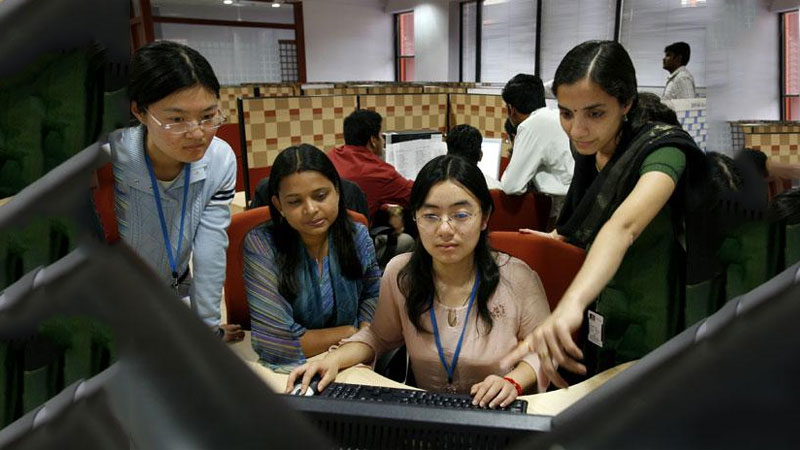Youth constitute a large percentage of our country. Therefore, they play important role in the development and growth of the country. The budget presented by the Modi government in parliament creates many avenues for increasing employability. Capital expenditure increased by 35.4 percent in the budget for 2022–23.It has been increased from Rs 5.54 lakh crore in the current year to Rs 7.50 lakh crore in 2022-23. This is more than 2.2 times the amount spent in 2019–20, and it will amount to 2.9 percent of GDP in 2022–23.Through this sharp jump in allocation for capex, the government intends to create employment opportunities through the speedy growth of the country. Its strong focus on infrastructure development is bringing huge opportunities for entrepreneurship as well as for job seekers. As Finance Minister Smt. Nirmala Sitharaman said while presenting the budget, PM Gati Shakti (Multi-modal Connectivity) is a transformative approach for economic growth and sustainable development. The approach is driven by seven engines, namely, roads, railways, airports, ports, mass transport, waterways, and logistics infrastructure. All seven engines will pull the economy forward in unison. These engines are supported by the complementary roles of energy transmission, IT communication, bulk water and sewerage, and social infrastructure. Finally, the approach is powered by clean energy and Sabka Prayas—the efforts of the central government, the state
The defence budget also envisages ample employability avenues for youths. The government, through the budget, reiterated its commitment to reducing imports and promoting AtmaNirbharta in equipment for the Armed Forces
governments, and the private sector working together—leading to huge job and entrepreneurial opportunities for all, especially the youth. The PM GatiShakti Master Plan for Expressways will be formulated in 2022–23 to facilitate the faster movement of people and goods. The National Highways network will be expanded by 25,000 km in 2022-23 and Rs 20,000 crore will be mobilised through innovative ways of financing to complement the public resources. The Productivity Linked Incentive scheme has been increased to 14 sectors in the budget to achieve the vision of Atma Nirbhar Bharat. It has the potential to create 60 lakh new jobs and has an additional production capacity of Rs 30 lakh crore during the next 5 years.
In view of creating employment opportunities, especially for youths at local level, in the railways, the government has launched the ‘One Station-One Product’ concept. The scheme will be helpful in encouraging and popularising local businesses and supply chains. Similarly, the Credit Guarantee Trust for Micro and Small Enterprises (CGTMSE) scheme will attract youth. The scheme will be revamped with the required infusion of funds. This will facilitate additional credit of Rs 2 lakh crore for micro and small enterprises and expand employment opportunities. The Finance Minister said that the Raising and Accelerating MSME Performance (RAMP) programme with an outlay of Rs 6,000 crore over 5 years would be rolled out to make the MSME sector more resilient, competitive, and efficient. Udyam, e-Shram, NCS, and ASEEM portals would be interlinked and their scope would be widened.
The Startups scheme, which is devoted to budding entrepreneurs, will be promoted under this new budget to facilitate ‘Drone Shakti’ through various applications and for Drone-As-A-Service (DrAAS). In select ITIs in all states, the required courses for skills will be started. In vocational courses, to promote crucial critical thinking skills, to give space for creativity, 750 virtual labs in science and mathematics, and 75 skilling e-labs for simulated learning environments, will be set-up in 2022-23.
The budget envisages a plan for a digital university that will be established to provide access to students across the country to a world-class quality universal education with a personalised learning experience at their doorsteps. This will be made available in different Indian languages and ICT formats. The university will be built on a networked hub-spoke model, with the hub building’s cutting-edge ICT expertise. The best public universities and institutions in t he country will collaborate as a network of hub-spokes.
The budget has also proposed setting up an animation, visual effects, gaming, and comic (AVGC) Promotion Task Force as the sector has the potential to offer huge employment opportunities for youth. Smt Nirmala Sitharaman said that telecommunications in general, and 5G technology in particular, can enable growth and offer job opportunities. She said that required spectrum auctions will be conducted in 2022 to facilitate the rollout of 5G mobile services within 2022–23 by private telecom providers. A scheme for design-led manufacturing will be launched to build a strong ecosystem for 5G as part of the Production Linked Incentive Scheme.
The defence budget also envisages ample employability avenues for youths. The government, through the budget, reiterated its commitment to reducing imports and promoting AtmaNirbharta in equipment for the Armed Forces. The government is going to give more priority in defence manufacturing to Swadeshi manufacturers. 68 percent of the capital procurement of defence budget will be allocated to domestic industry in 2022-23, up from 58 percent in 2021-22. This Atma Nirbhar defence budget includes 25% of the defence R&D budget for industry, startups, and academia will be more beneficial to MSME. The proliferation of MSME in this sector has the potential to engage an increasing number of young people.


